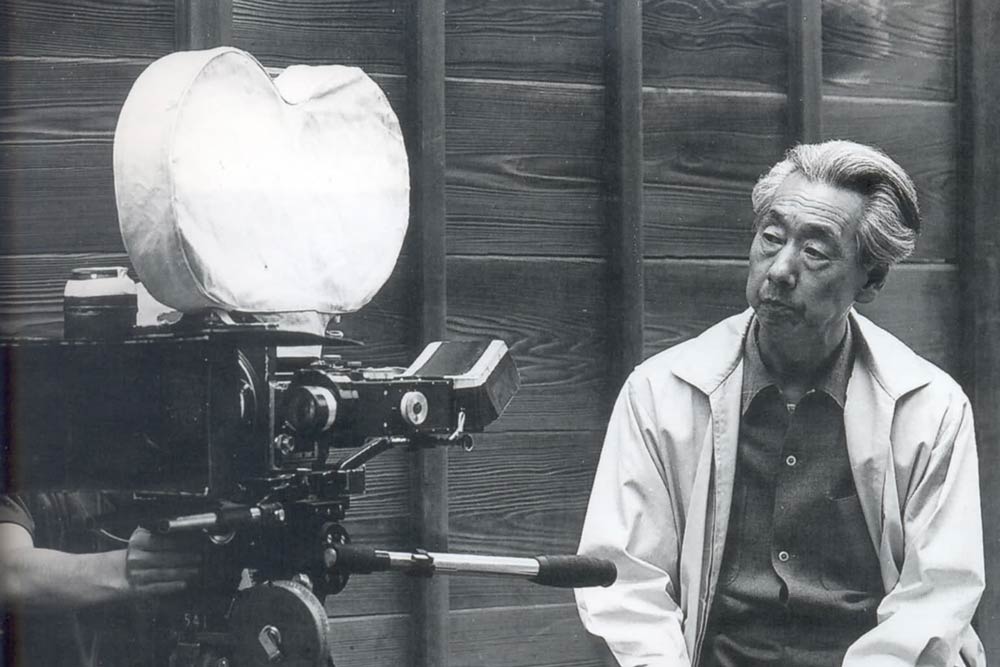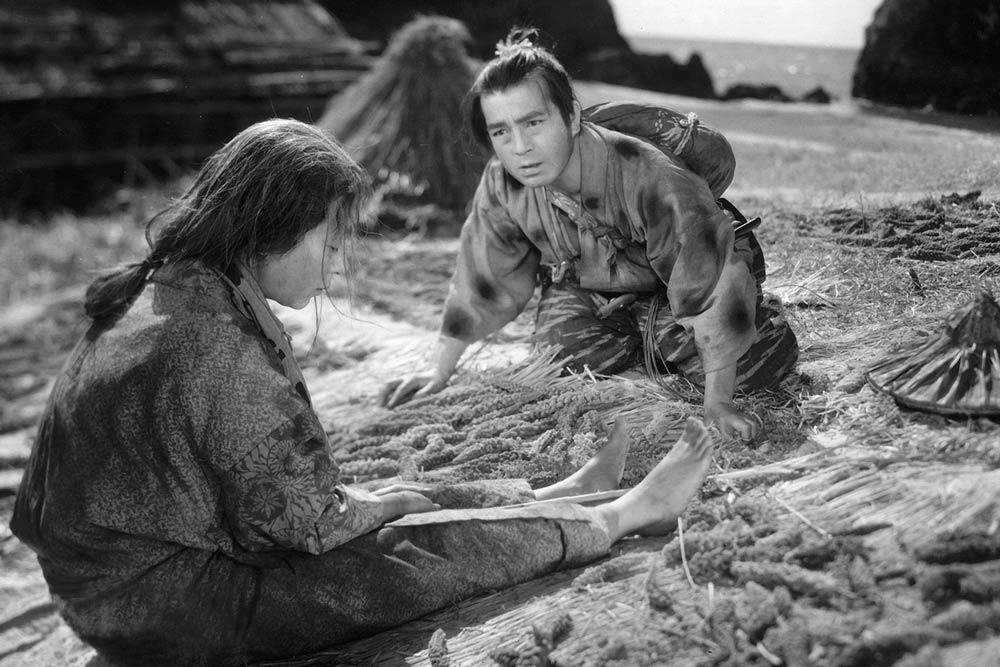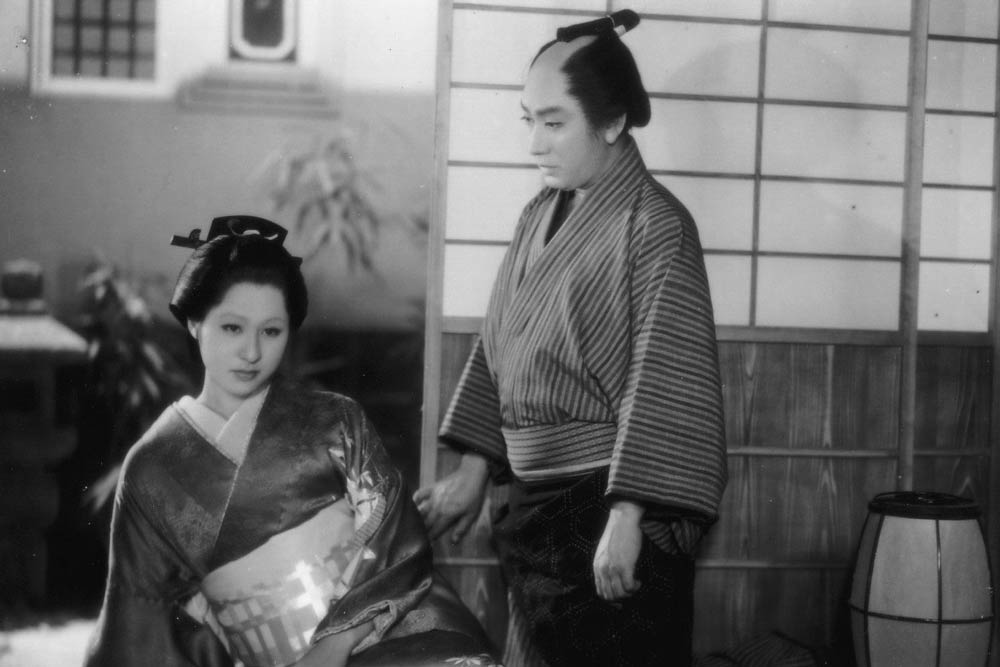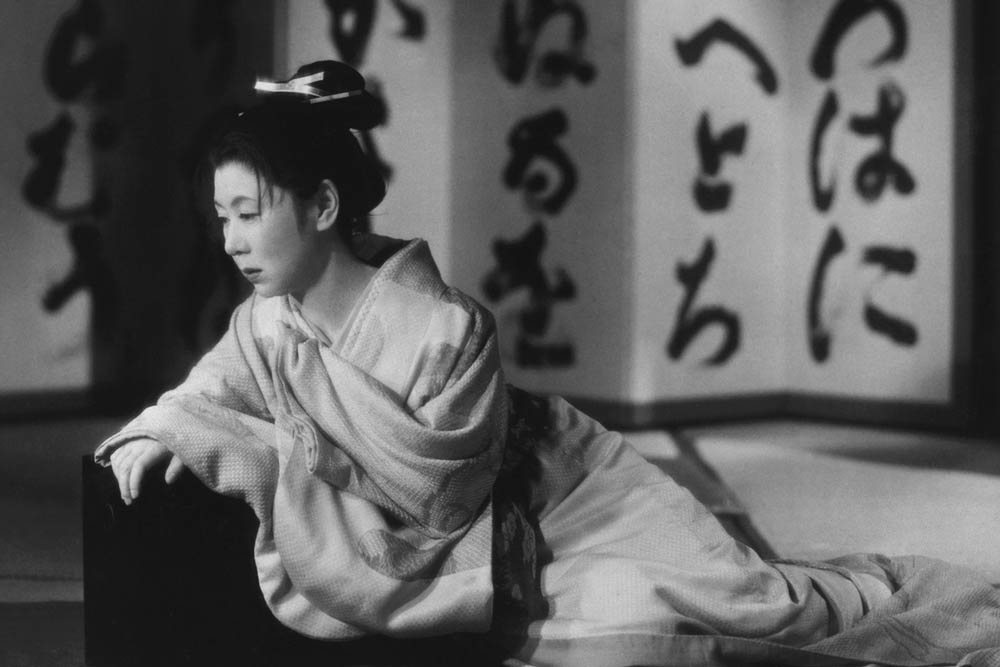Kenji Mizoguchi

Biography
Kenji Mizoguchi. a Japanese director (Tokyo, 1898 - Kyoto, 1956). Born in a poor family, he was educated at the painting school of S. Kuroda, the first Japanese importer of French plenerist paintings, and worked as a newspaper illustrator. He works on film since 1922 as an assistant director, and has started directing the year later. He directed more than 40 films in the silent period (almost all of them lost). He makes films of various genres: melodramas (eg the debut Resurrection of Love), comedy, adaptations of literary works (Foggy Harbour 1923, based on Anna Christie E. O'Neill's drama), social and psychological drama, crime film (eg Blood and Soul, 1923, in which he absorbs the poetics of German expressionism) and the horror film Passion of a Woman Teacher (1926), which proclaims a tendency to mix the real and the unreal. In the late 1920s and early 1930s, he made a significant contribution to the left-wing socio-critical tendency of "message films" (keiko eiga): the Tokyo March and the Metropolitan Symphony (both 1929) and the Hometown (1930), his (and Japanese) first sound film, as well as And Yet They Go On (1931), the last film in that style. During the 1930s, with the films The Water Magician (1933), The Downfall of Osen, Oyuki the Virgin (both 1935), Naniwa Elegy (1936), his first collaboration with screenwriter Yoshikato Yoda, the screenwriter of almost all his subsequent films, Sisters of the Gion, The Story of the Last Chrysanthemums (1939) he fully defines his main thematic preoccupation - the portrayal of women who mostly consciously sacrifice themselves for the love of selfish men or, less frequently, rebel against their own exploitation of relationships, trying to overcome the system, which Mizoguchi will especially thematize after World War II in contemporary-themed (gendai-geki) melodramas, often about geishas and prostitutes: The Love of the Actress Sumako (1947), Women of the Night (1948), Flame of My Love (1949), Portrait of Madam Yuki (1950), Miss Oyu (1951) , Street of Shame (1956). He frames such themes with the tension of the past and the present, with an aversion of nostalgia, prone to critical analysis of traditional patterns of social behavior, but also a cyclical representation of the present, with the concept of time proving illusory. At the same time, it develops a style based on long frames, overwhelming use of totals, semitotals and midplans, slow camera movements and elaborate orchestration of actors' movements within the frame, a whole distant representation of the emphatic and dramatic situations with characters often turned away from the camera, located along the frame or covered with walls and shadows.
After a successful attempt at the genre of jidai-geki by processing the classic samurai saga of The 47 Ronin (1941, in 2 parts), in which he breaks down genre patterns by emphasizing the long preparation of revenge and peaceful acceptance of fate, for the genre with unusually extremely long shots (144 in total), to the climax brought by monumental compositions (often from the extreme upper angles) and by not showing crucial battles, at the conclusion of World War II he returns to its fundamental preoccupation - the suffering of a woman, with a film of the same genre tendency Utamaro and His Five Women (1945). Unlike the pre-war films, set in the present or in recent history of the Meiji period (1868–1913), the most significant films of the 1950s thematize the distant past and increasingly emphasize the motive of the possibility of spiritual transcendence of physical suffering: The Life of Oharu (The Silver Lion in Venice) is the beginning of the last period of his creation; followed by Ugetsu (Silver Lion), Sansho The Bailiff (Silver Lion), The Crucified Lovers, and Princess Yang Kwei-Frei. While retaining the long frames and distant plans, these films, with their frame composition and lighting, especially in the depiction of nature, are increasingly relying on the tradition of Japanese painting. The portrayal of heroines who sacrifice and suffer (which as the idealistic projection of feminine behavior culminates in Princess Yang Kwei Fei) and their social degradation and physical distress are shaped with a style of extraordinary artistic refinement and stylization as a process of aesthetically redeeming human errors and defects, which are mostly illusory ambitions - a consequence of the repressive patriarchal system. He also proves himself a master of onyear film, transcending the boundary of dream and reality, discreetly revealing spiritual reality by realistic means and incorporating phantasmagoric into the patterns of class fabulas, and at the same time culminates in economizing the use of marvelous stylistic practices and minimizing redundancy. Then he draws the attention of international criticism and becomes, with A. Kurosawa, often considered his antonym, the most famous Japanese filmmaker in the world, especially appreciated in European authorial criticism, which emphasizes his elaborate organization of mischief, visual elegance, contemplativeness and closeness to his painting and musical procedures.
Festivali i Nagrade
Blue Ribbon 1955 - Najbolji redatelj (Legenda o raspetim ljubavnicima) / Cahiers du Cinéma - Najbolji film (Legenda o klanu Taira, 1961. / Intendant Sansho, 1960. / Legenda o Ugetsuu, 1959. / Princeza Yang Kwei-Frei, 1959.) / Cannes Film Festival 1955 - Nominacija za Zlatnu palmu / Kinema Junpo 1937 - Najbolji film (Sestre iz Giona) / Venice Film Festival - Posebni pomen za Ulice srama, 1956. / Srebrni lav za Intendant Sansho, 1954. / Srebrni lav i Nagrada Pasinetti za film Legenda o Ugetsuu, 1953., / Međunarodna nagrada za Život O'Haru, 1952.;
Films
Intendant Sansho
feature film
In medieval Japan, a compassionate governor is sent into exile. His wife and children try to join him, but are separated, and the children grow up amid suffering and oppression. → more
Legenda o raspetim ljubavnicima
Chikamatsu monogatari, Japan, 1954., feature film
Ishun is a wealthy, but unsympathetic, master printer who has wrongly accused his wife and best employee of being lovers. To escape punishment, the accused run away together, but Ishun is certain to be ruined → more
Život Ohare
Saikaku ichidai onna, Japan, 1952., feature film
Follows a woman's fight and survival amid the vicissitudes of life and the cruelty of the society. → more


